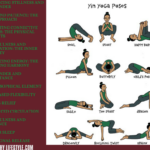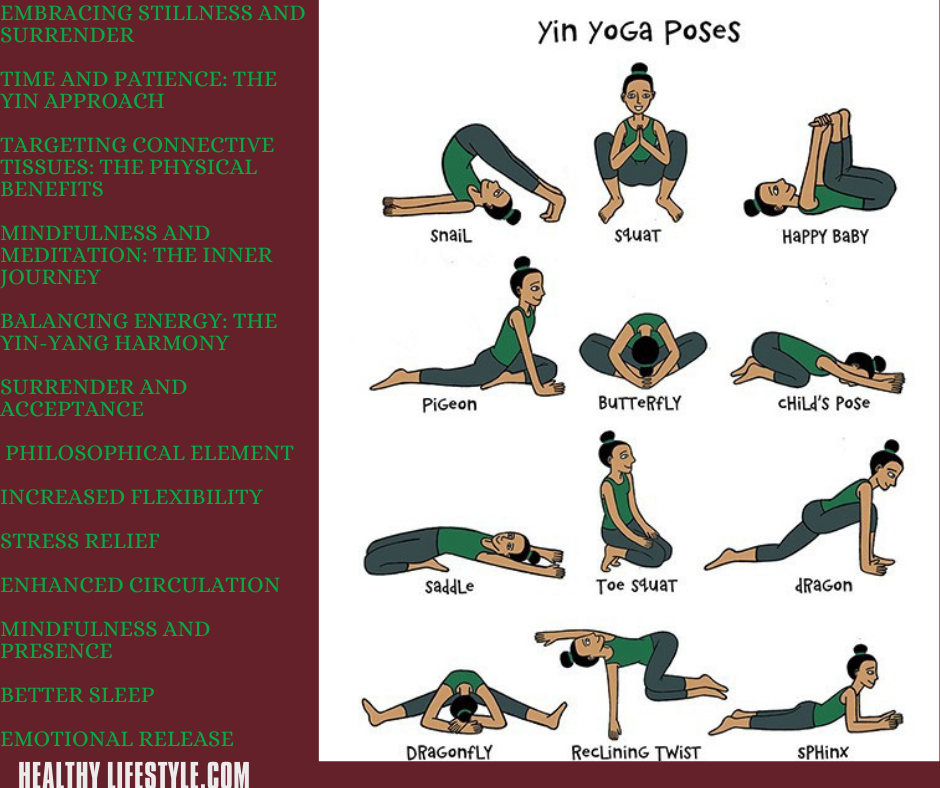The Mind-Body Connection in 7 Yoga : Techniques and Benefits
The Mind-Body Connection in 7 Yoga is not just a physical practice; it’s a journey towards harmony between the mind and body. By focusing on the breath, movement, and mindfulness, practitioners can cultivate a deep and profound mind-body connection. This connection is essential for achieving holistic well-being and inner peace. Let’s delve into various techniques that facilitate the mind-body connection in yoga, along with their benefits and considerations.
Table of Contents of
The Mind-Body Connection in 7 Yoga
- Introduction
- Breathing Techniques and Pranayama
- Dirga Pranayama: Three-Part Breath
- Ujjayi Pranayama: Victorious Breath
- Nadi Shodhana: Alternate Nostril Breathing
- Meditation: Cultivating Inner Peace
- Mindfulness Meditation
- Loving-Kindness Meditation
- Body Scan Meditation
- Guided Imagery and Visualization
- Chanting and Mantras
- Yoga Nidra: The Yogic Sleep
- Biofeedback and Sensory Awareness
- Benefits of a Strong Mind-Body Connection
- Considerations and Precautions
- Conclusion
Breathing Techniques and Pranayama
Breath is the bridge between the body and mind in yoga. Pranayama, or breath control, is a fundamental technique that helps establish this connection. Different pranayama techniques guide the breath in various ways, affecting both the body’s physiological responses and the mind’s state.
Dirga Pranayama: Three-Part Breath
Benefits:
- Enhances lung capacity and oxygenates the body.
- Reduces stress and anxiety by activating the parasympathetic nervous system.
- Promotes relaxation and a sense of calm.
Considerations:
- Start with a comfortable pace and gradually extend the duration of inhalation and exhalation.
- Avoid straining or forcing the breath.
Ujjayi Pranayama: Victorious Breath
Benefits:
- Generates heat in the body, aiding in detoxification.
- Focuses the mind and enhances concentration.
- Cultivates a sense of internal awareness.
Considerations:
- Constrict the throat slightly to create the characteristic ocean-like sound.
- Maintain a steady and controlled breath, avoiding excessive force.
Nadi Shodhana: Alternate Nostril Breathing
Benefits:
- Balances the left and right hemispheres of the brain.
- Calms the nervous system and reduces stress.
- Enhances mental clarity and focus.
Considerations:
- Use gentle pressure on the nostrils during inhalation and exhalation.
- Keep the breath smooth and even, avoiding strain.
Meditation: Cultivating Inner Peace
Meditation is a powerful tool for deepening the mind-body connection. It encourages mindfulness, self-awareness, and a sense of presence.
Mindfulness Meditation
Benefits:
- Increases awareness of thoughts, emotions, and bodily sensations.
- Reduces rumination and promotes mental clarity.
- Cultivates a non-judgmental attitude towards experiences.
Considerations:
- Find a comfortable seated position and maintain an alert yet relaxed posture.
- Gently redirect the focus to the breath or sensations whenever the mind wanders.
Loving-Kindness Meditation
Benefits:
- Cultivates compassion and empathy towards oneself and others.
- Enhances emotional well-being and reduces negative self-talk.
- Fosters a sense of interconnectedness and positivity.
Considerations:
- Begin by directing loving-kindness towards yourself before extending it to others.
- Use heartfelt phrases or affirmations to generate feelings of kindness.
Body Scan Meditation
Benefits:
- Develops body awareness and releases tension.
- Promotes relaxation and a sense of embodiment.
- Encourages mindful observation without judgment.
Considerations:
- Start at the head or feet and systematically scan each body part.
- Notice any sensations or areas of discomfort without attempting to change them.
Guided Imagery and Visualization
Guided imagery involves creating mental images or scenarios to evoke specific sensations, emotions, or experiences.
Benefits:
- Enhances the mind-body connection by engaging the imagination.
- Reduces stress and anxiety by redirecting focus from worries.
- Can improve physical performance through mental rehearsal.
Considerations:
- Choose imagery that resonates with you and feels calming or uplifting.
- Practice in a quiet and comfortable environment.
Chanting and Mantras
Chanting involves repeating specific sounds, words, or phrases, known as mantras, to create resonance and vibration within the body.
Benefits:
- Calms the mind and induces a meditative state.
- Creates a rhythmic and harmonizing effect on the nervous system.
- Can enhance concentration and focus.
Considerations:
- Choose mantras that hold personal significance or explore traditional ones.
- Maintain a steady and rhythmic pace while chanting.
Yoga Nidra: The Yogic Sleep
Yoga Nidra is a guided relaxation technique that induces a state of conscious relaxation, often described as a “yogic sleep.”
Benefits:
- Reduces stress and anxiety by calming the nervous system.
- Enhances creativity and problem-solving abilities.
- Promotes deep rest and rejuvenation.
Considerations:
- Follow the guided instructions while lying down in a comfortable position.
- Allow yourself to let go and fully immerse in the experience.
Biofeedback and Sensory Awareness
Biofeedback techniques involve monitoring physiological responses, such as heart rate, breathing, or muscle tension, to gain insight into the mind-body connection.
Benefits:
- Increases awareness of bodily responses and stress triggers.
- Facilitates conscious control over physiological functions.
- Supports self-regulation and stress reduction.
Considerations:
- Use biofeedback devices or techniques under professional guidance.
- Practice consistently to develop greater control over physiological responses.
Benefits of a Strong Mind-Body Connection
Cultivating a strong mind-body connection through these techniques offers a multitude of benefits for overall well-being:
- Reduced stress and anxiety: Mind-body practices promote relaxation and regulate the stress response, leading to reduced feelings of anxiety and tension.
- Enhanced self-awareness: The practices encourage mindfulness, allowing individuals to become more attuned to their thoughts, emotions, and bodily sensations.
- Improved physical health: The mind-body connection positively influences physiological functions, such as heart rate, blood pressure, and immune response.
- Better emotional regulation: Mind-body techniques foster emotional resilience and provide tools for managing challenging emotions.
- Heightened sense of presence: By focusing on the present moment, individuals can experience a greater sense of clarity, focus, and presence.
- Deepened spiritual growth: The mind-body connection can facilitate a deeper understanding of oneself and one’s connection to the universe.
Considerations and Precautions
While mind-body practices offer numerous benefits, it’s important to consider certain precautions:
- Personal comfort: Choose techniques that resonate with you and feel comfortable.
- Professional guidance: Seek guidance from qualified instructors or healthcare professionals, especially if you have medical conditions or concerns.
- Consistency: Regular practice yields the best results, so establish a routine that suits your lifestyle.
- Patience: Developing a strong mind-body connection takes time and patience. Avoid rushing the process.
Conclusion
Cultivating a profound mind-body connection is at the heart of the yoga practice. Through breath, meditation, imagery, and other techniques, individuals can embark on a transformative journey towards holistic well-being. By integrating these practices into daily life, one can experience a deeper sense of self-awareness, inner calm, and alignment between the body and mind.
Frequently Asked Questions (FAQ) on The Mind-Body Connection in Yoga
- What is the mind-body connection in yoga? The mind-body connection in yoga refers to the integration and harmony between mental and physical aspects of oneself. It involves techniques and practices that promote awareness, presence, and a deeper understanding of how thoughts, emotions, and physical sensations influence each other.
- Why is the mind-body connection important in yoga? The mind-body connection is essential in yoga as it enhances the overall yoga experience. It allows practitioners to be fully present in their practice, deepening their understanding of their body’s signals and their mind’s responses. This connection can lead to improved physical health, emotional well-being, and a more profound sense of inner peace.
- How can I establish a strong mind-body connection during my yoga practice? You can establish a strong mind-body connection in yoga through various techniques such as breath awareness, meditation, visualization, and mindful movement. By focusing on your breath, observing sensations in your body, and staying present in each pose, you can cultivate a deeper connection between your mind and body.
- What are some benefits of a strong mind-body connection in yoga? A strong mind-body connection can lead to reduced stress and anxiety, improved physical flexibility and strength, enhanced emotional regulation, increased self-awareness, and a greater sense of overall well-being. It can also deepen your spiritual practice and help you achieve a state of mindfulness and inner calm.
- Can I practice the mind-body connection outside of yoga? Absolutely. The mind-body connection is not limited to the yoga mat. You can incorporate mindfulness and awareness into your daily life by paying attention to your breath, being present in everyday activities, and practicing meditation. These practices can help you stay centered and mindful throughout your day.
- Are there any risks or challenges in developing the mind-body connection? While developing the mind-body connection can be immensely beneficial, it may also bring up challenges. Some individuals might find it difficult to quiet their minds or become aware of their emotions and sensations. It’s essential to approach the process with patience and self-compassion, seeking guidance from experienced instructors or practitioners if needed.
- Can the mind-body connection help with managing pain or chronic conditions? Yes, the mind-body connection has been shown to have a positive impact on managing pain and chronic conditions. Mindful practices like meditation and deep breathing can help alleviate pain perception and improve overall well-being. However, it’s important to consult with healthcare professionals for a comprehensive approach to managing health issues.
- Is the mind-body connection the same as meditation? While meditation is a significant component of developing the mind-body connection, they are not the same. The mind-body connection encompasses a broader range of techniques, including breath awareness, visualization, and mindfulness, that aim to integrate mental and physical aspects. Meditation is a specific practice that contributes to this connection.
- Can anyone develop a strong mind-body connection through yoga? Yes, anyone can develop a strong mind-body connection through yoga. It is a practice that is accessible to people of all ages and fitness levels. Whether you are a beginner or an experienced yogi, cultivating the mind-body connection is a gradual process that can be personalized to your needs and capabilities.
- How long does it take to establish a noticeable mind-body connection in yoga? The time it takes to establish a noticeable mind-body connection varies from person to person. Some individuals might experience a deeper connection early on, while others may require more time and consistent practice. The key is to approach the practice with patience, dedication, and an open heart, allowing the connection to naturally unfold over time











